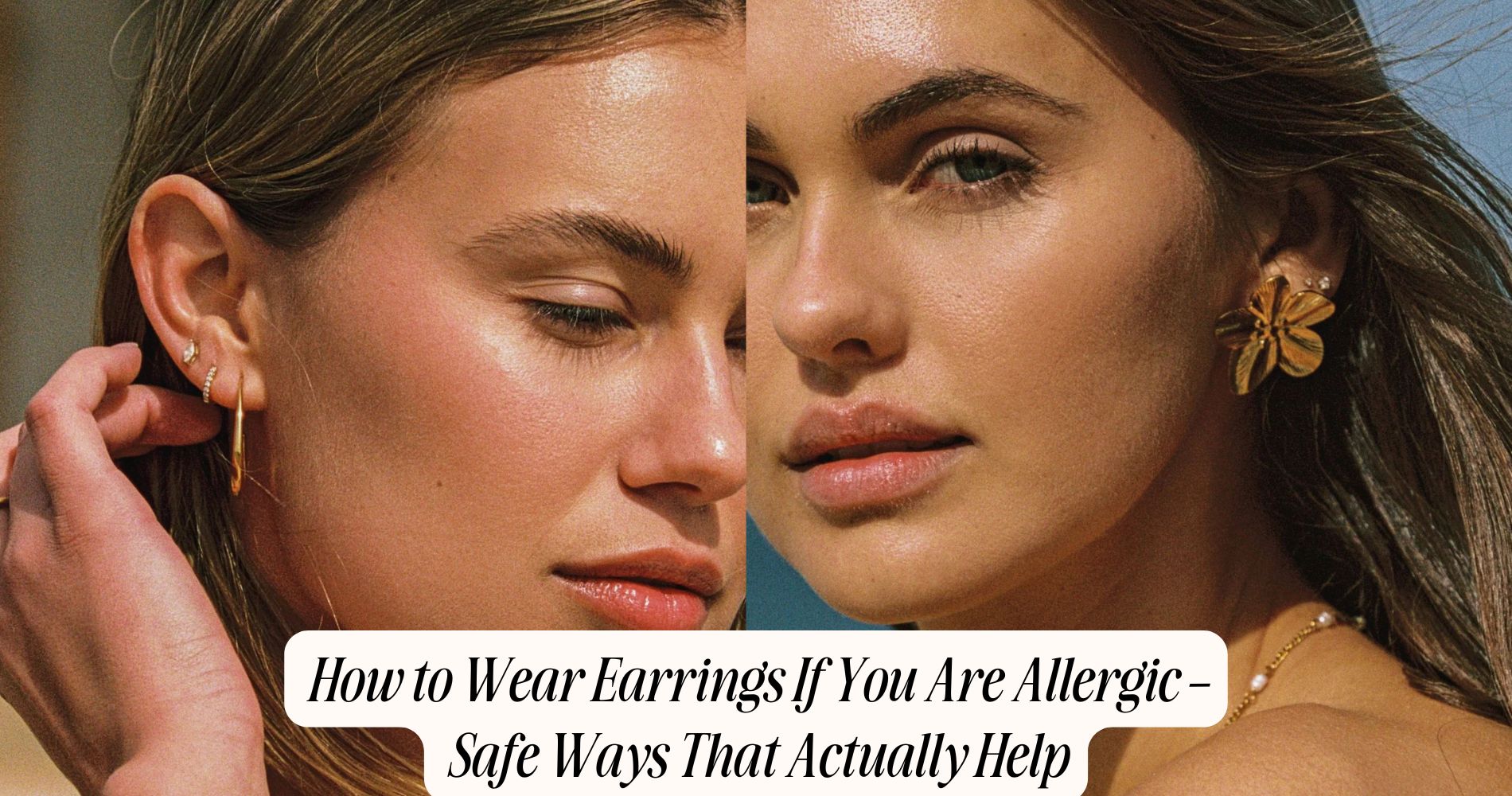
How to Wear Earrings If You Are Allergic – Safe Ways That Actually Help
How to wear earrings if you are allergic: If you’re allergic to earrings, it’s important to choose hypoallergenic materials like surgical stainless steel, titanium, niobium, or medical-grade plastic. These materials help minimize nickel exposure and reduce skin reactions. Always select earrings labeled “nickel-free” and purchase from reputable sources. Clean your earrings regularly and store them in dry, hygienic containers to prevent irritation. Never ignore redness or swelling—remove your earrings and seek medical advice if symptoms persist. For even more tips on how to wear earrings if you are allergic, and to explore stylish options, check out our big hoop earrings collection.
Understanding Earring Allergies and Their Causes
Although many people experience discomfort from earrings, true earring allergies usually result from a hypersensitivity reaction to certain metals, most commonly nickel. When you wear earrings containing nickel, your immune system may recognize nickel ions as foreign and trigger contact dermatitis—a localized, itchy rash.
This response indicates metal sensitivity rather than a simple irritation. Repeated nickel exposure increases your risk for developing or worsening this sensitivity over time. Symptoms typically include redness, swelling, or weeping at the site of contact.
If you suspect a metal allergy, consider consulting a dermatologist for patch testing, which can confirm the diagnosis and identify specific allergens. Because reactions can escalate with ongoing exposure, it’s prudent to minimize contact with suspected metals and monitor your skin for any changes.
Common Allergenic Metals Found in Earrings
Why do certain earrings trigger allergic reactions more than others? The answer often lies in the specific metals they contain. Nickel sensitivity is the most prevalent cause of allergic contact dermatitis related to earrings. Even trace amounts of nickel can provoke an immune response in susceptible individuals, resulting in erythema, pruritus, and swelling at the piercing site.
Cobalt and chromium are also recognized allergens, though less common than nickel.
Many earrings use base metals with metal plating to enhance appearance or durability. Unfortunately, thin plating can wear away, exposing allergenic metals beneath.
You should exercise caution with costume jewelry and low-cost earrings, as they frequently contain undisclosed nickel. Opt for reputable brands that clearly label metal content, and consider avoiding plated earrings if you’ve experienced reactions in the past.
Hypoallergenic Materials to Look For
When choosing earrings to minimize allergic reactions, prioritize materials that demonstrate low immunogenicity and rare sensitization in clinical studies. Medical-grade titanium, surgical stainless steel, and niobium are frequently recommended due to their inert characteristics and minimal risk of hypersensitivity.
Platinum and 18-karat or higher gold alloys also show low reactivity, but ensure alloys contain negligible nickel. Contemporary jewelry design often incorporates these hypoallergenic metals, aligning with evolving fashion trends without compromising safety.
You should avoid plated or mixed-metal earrings, as thin coatings may degrade, exposing sensitizing agents. For sensitive individuals, opt for earrings explicitly labeled as hypoallergenic and verify manufacturer data regarding material purity.
While ceramic and medical-grade plastics are alternatives, proceed with caution if you have a history of multiple metal allergies.
How to Test Earrings for Allergic Reactions
Selecting hypoallergenic materials lowers the risk of irritation, but individual sensitivities can still vary. Before wearing new earrings, you should verify jewelry material labels to guarantee they match your tolerance profile.
Even with accurate labels, it’s wise to use allergy testing methods, such as a patch test. Place the earring post against the inside of your forearm for 24–48 hours and monitor for erythema, pruritus, or edema—common contact dermatitis indicators.
If you notice any skin reaction, avoid wearing that material. For individuals with severe metal allergies, consider consulting a dermatologist for professional patch testing and tailored recommendations.
Always err on the side of caution, as even trace amounts of nickel or other allergens can provoke significant reactions in sensitized individuals.
Coating and Sealing Techniques for Sensitive Ears
Although hypoallergenic materials remain the gold standard, coating and sealing techniques can further minimize allergen exposure for sensitive ears. You can employ methods like metal plating, which covers the base metal with a less reactive layer such as rhodium or platinum.
However, it’s important to note that plating may wear down over time, so monitor for chipping or discoloration. Another option is resin coating—a clear, medical-grade barrier applied directly to the earring’s surface. This sealant prevents direct skin contact with potential allergens.
While resin coating offers temporary relief, reapplication is necessary as it degrades with use and cleaning. Always ensure that any coating product is biocompatible and free from known irritants. Conduct a patch test before prolonged wear to assess your individual tolerance.
Tips for Shopping Allergy-Safe Earrings
If you have a history of metal hypersensitivity, prioritize earrings labeled as “nickel-free” or “hypoallergenic,” but recognize that such labels aren’t standardized or regulated across all manufacturers.
When addressing nickel sensitivity and jewelry allergies, scrutinize product materials. Surgical-grade stainless steel, titanium, niobium, and platinum are less likely to provoke allergic reactions and are supported by clinical studies for reduced allergenicity.
Avoid earrings composed of base metals, especially those with unknown alloy content, as these often contain nickel. Request detailed compositional information from reputable vendors or seek certifications like ASTM F-138 for surgical steel.
You’ll reduce your risk by selecting earrings with transparent sourcing and proven biocompatibility. Always monitor for signs of irritation after wearing new pieces, as individual responses to metals can vary markedly.
Cleaning and Caring for Your Earrings
Since prolonged contact with allergens can exacerbate sensitivity, implementing a consistent cleaning routine for your earrings is vital. You should disinfect your earrings regularly using a gentle, non-irritating solution such as isopropyl alcohol or saline.
Evidence suggests that thorough removal of contaminants reduces the risk of allergic contact dermatitis. Avoid harsh chemicals, as these may leave residues that increase irritation. After cleaning, dry your earrings completely before wearing or storing them.
Proper jewelry storage also plays a fundamental role in minimizing allergen exposure. Store your earrings in a clean, dry, and separate compartment to avoid cross-contamination with other metals or substances.
Choose storage solutions that prevent moisture accumulation, as damp environments can promote microbial growth. Adhering to these practices supports skin barrier integrity and reduces hypersensitivity reactions.
Home Remedies to Soothe Irritated Earlobes
When your earlobes become irritated after wearing earrings, you can employ several home remedies to alleviate discomfort and support the skin’s natural healing process. Start by removing the earrings and cleansing the area with a gentle, fragrance-free cleanser and lukewarm water.
You may apply a cold compress for 10–15 minutes to reduce inflammation.
Consider using natural remedies, such as a diluted chamomile tea compress, which possesses mild anti-inflammatory properties.
Petroleum jelly can help lock in moisture and protect the compromised skin barrier.
Over-the-counter hydrocortisone cream, applied sparingly, may decrease pruritus and erythema, but use it cautiously and avoid prolonged application.
These soothing techniques offer symptomatic relief for mild irritation, but always monitor your skin’s response and discontinue any remedy that worsens discomfort or causes further reaction.
When to See a Dermatologist About Earring Allergies
While home interventions often relieve mild earlobe irritation, some symptoms warrant professional evaluation. If you notice persistent redness, swelling, discharge, or pain around your piercing, these may indicate an earring infection or more serious piercing complications.
Don’t ignore signs such as fever, spreading redness, or severe tenderness, as these can signal cellulitis—a potentially serious skin infection. If symptoms don’t improve after removing the earrings and using over-the-counter remedies for several days, it’s time to consult a dermatologist.
A specialist can accurately diagnose allergic contact dermatitis versus infection and recommend appropriate treatment, such as topical or oral medications. Prompt medical attention reduces the risk of scarring and chronic problems.
Always seek evaluation if you have a history of severe allergic reactions to metals.
Stylish Earring Options for Sensitive Ears
Although earring allergies limit your options, you can still find attractive designs made with hypoallergenic materials. Focus on earrings crafted from surgical-grade stainless steel, titanium, niobium, or medical-grade plastic. These materials have low allergenic potential and are commonly recommended by dermatologists for individuals with contact dermatitis.
Examine labels carefully and avoid alloys containing nickel, which is a frequent trigger of allergic reactions. You don't need to sacrifice style—fashion trends now feature minimalist hoops, studs, and statement pieces in hypoallergenic metals.
Consider brands that specialize in allergy-safe jewelry and offer protective coatings. Proper jewelry storage is essential; use clean, dry containers to prevent contamination and oxidation. Rotate your earrings regularly and clean them thoroughly to minimize the risk of irritation or delayed-type hypersensitivity.
Frequently Asked Questions
Can Earring Allergies Develop Suddenly in Adulthood?
Yes, you can develop earring allergies suddenly in adulthood due to new allergy symptom triggers, such as nickel exposure. Clinicians recommend considering allergy testing options to identify sensitivities and guide safe earring choices, minimizing adverse reactions.
Are Clip-On Earrings Safer for Sensitive Ears?
Clip-on earrings may reduce nickel sensitivity risks since they don't pierce the skin, but they're not completely safe. You should choose hypoallergenic materials, like surgical steel or titanium, to further minimize allergic contact dermatitis and irritation in sensitive ears.
Do Earring Allergies Affect Ear Piercings Long-Term?
Earring allergies can lead to chronic inflammation or scarring in piercings if not managed. You should consider allergy testing to identify triggers and always choose hypoallergenic options to minimize long-term complications and preserve tissue integrity.
Can I Wear Earrings During Sports if I Have Allergies?
If you have allergies, it's best to avoid earrings during sports to reduce irritation or trauma. If you must wear them, choose hypoallergenic materials and undergo allergy testing to guarantee minimal risk of allergic reactions.
Is It Possible to Outgrow Metal Allergies Over Time?
You usually don't outgrow metal allergies, as sensitization often persists. However, you might experience reduced symptoms over time. Always choose hypoallergenic alternatives and consult an allergist for allergy testing before reintroducing metals into your routine.
Conclusion
If you’re prone to earring allergies, don’t ignore persistent symptoms. Choose earrings made from hypoallergenic materials like surgical-grade titanium or niobium, and always test new pieces on a small patch of skin before extended wear. Regularly clean your jewelry and consider barrier methods, but discontinue use if irritation occurs. While these strategies can minimize reactions, consult a dermatologist if you experience severe or ongoing inflammation, as professional guidance guarantees ideal management and protects your skin health.







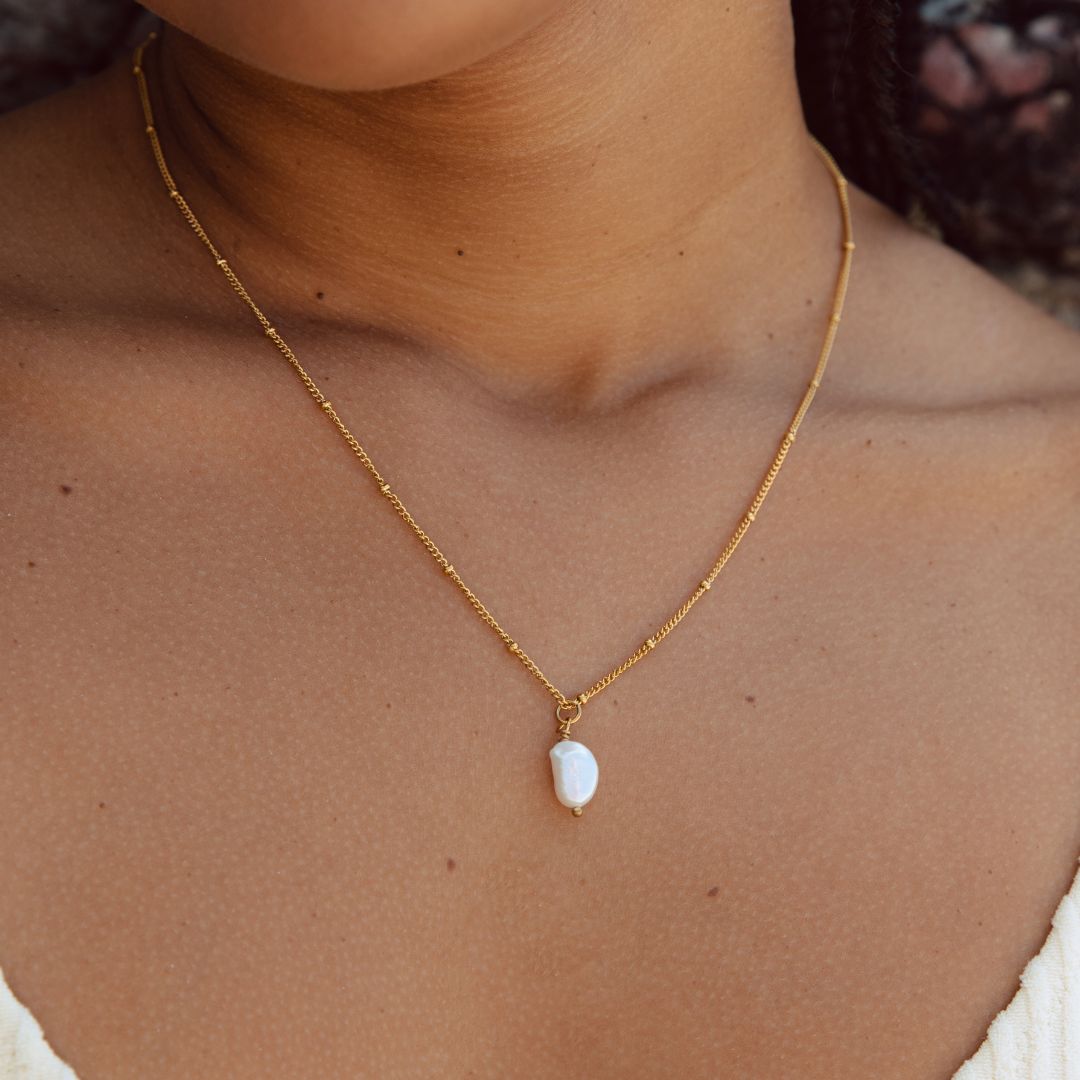

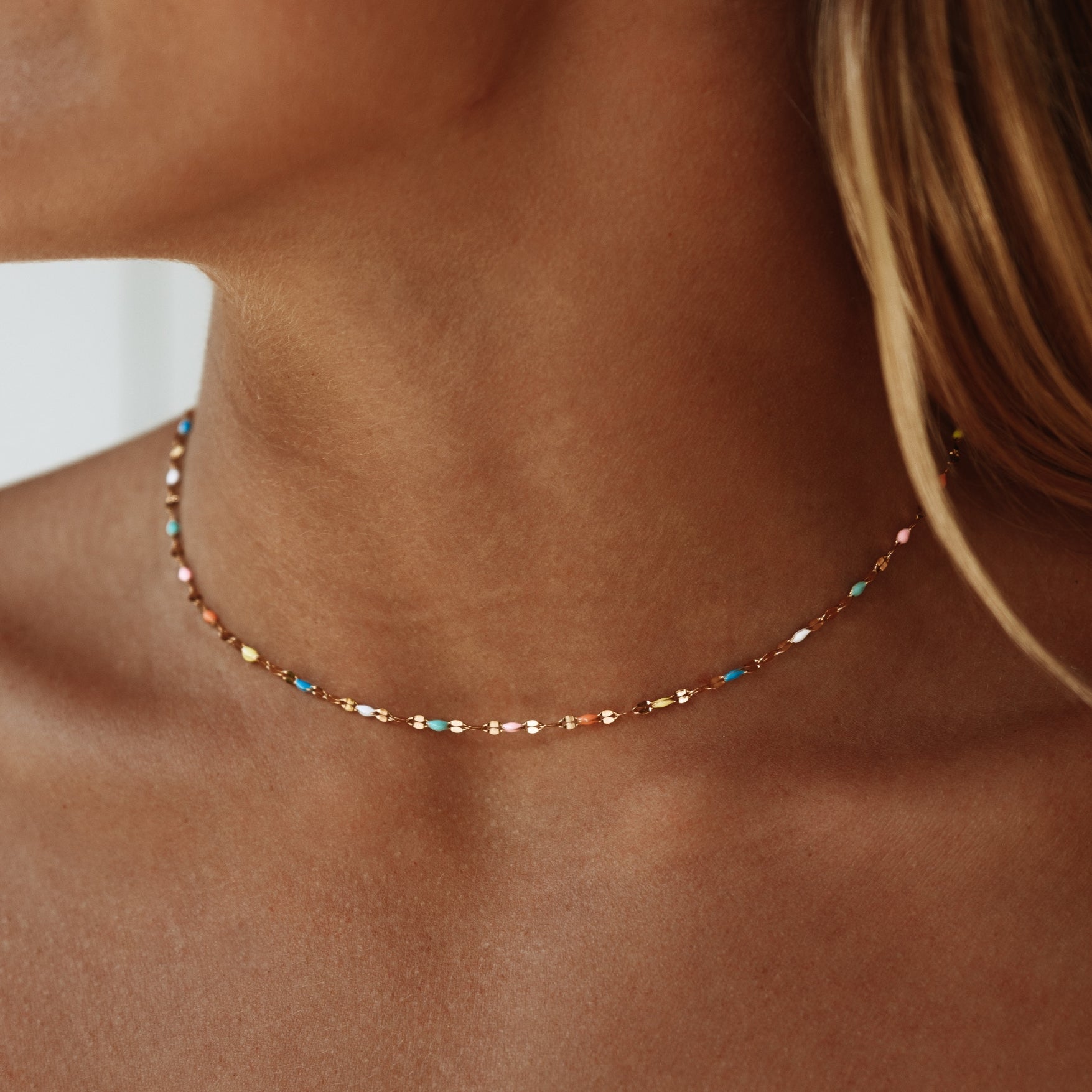


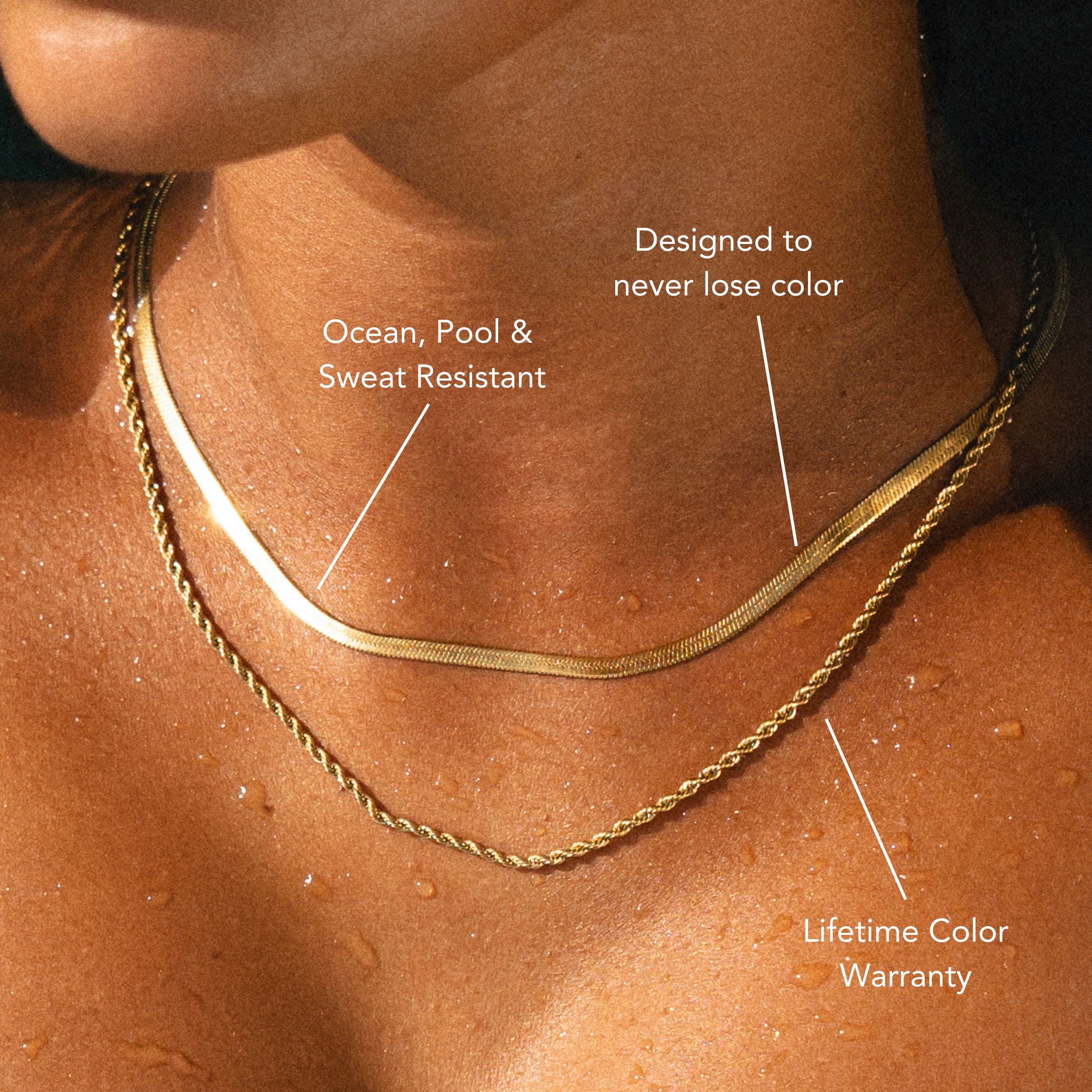
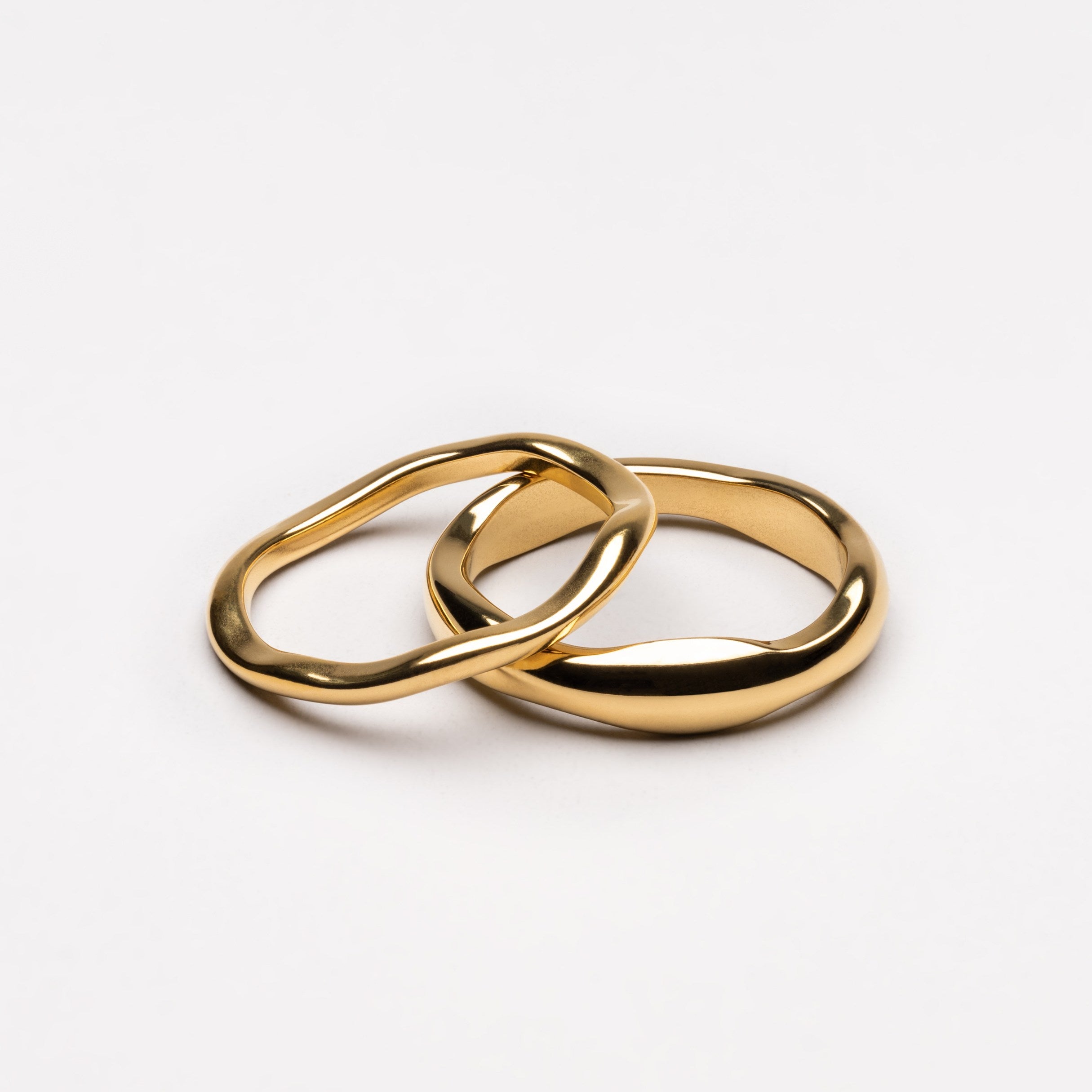


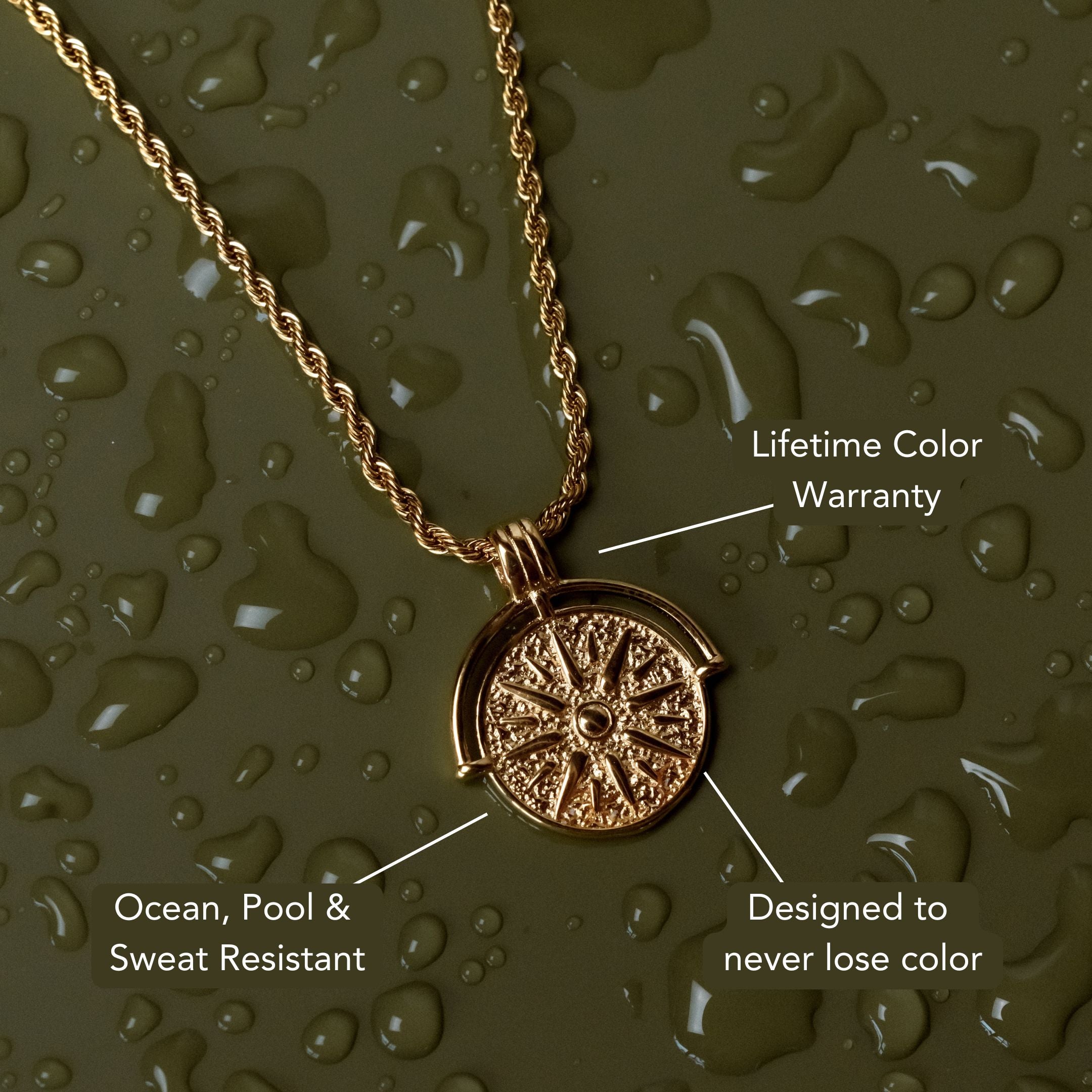
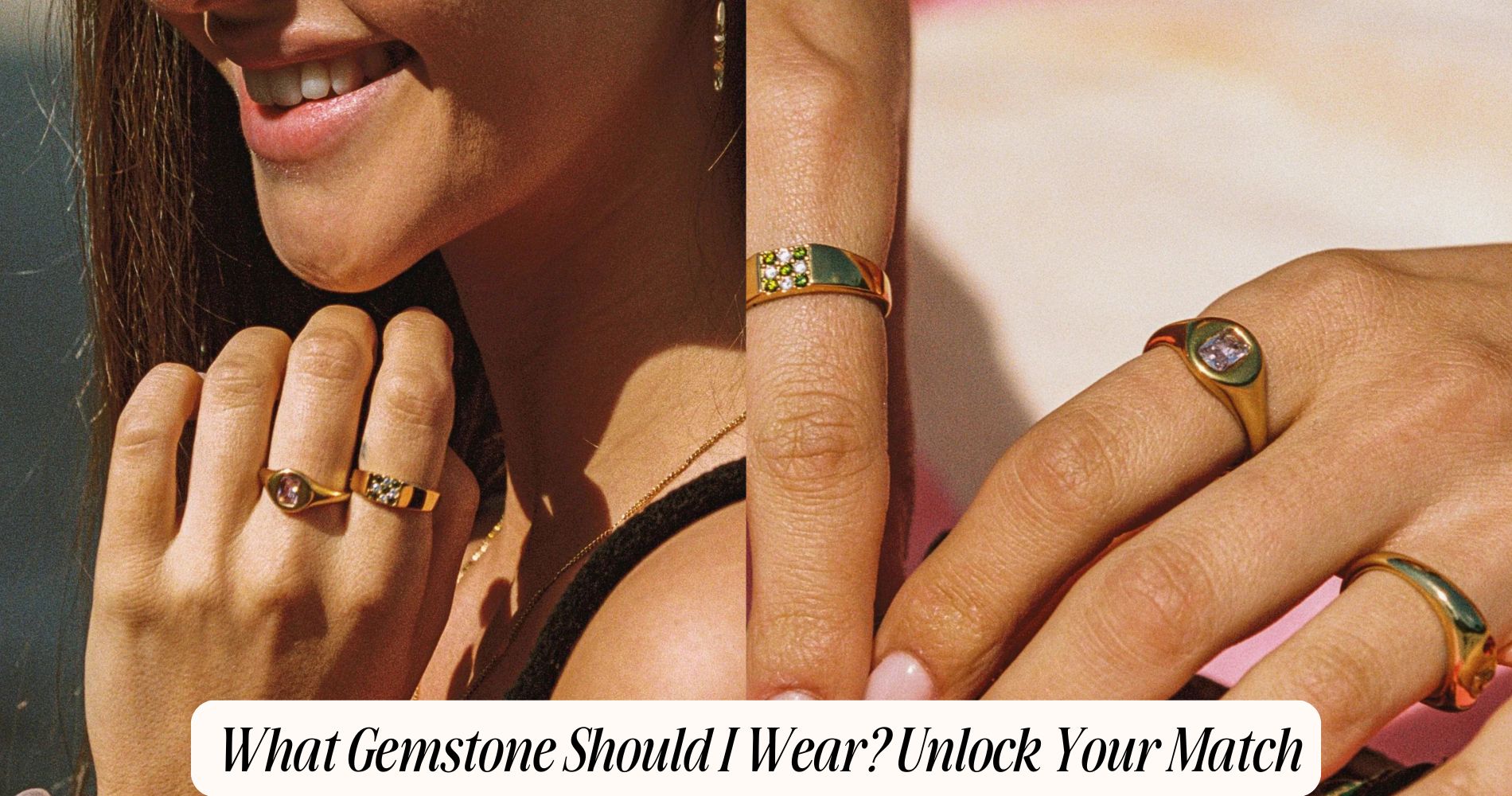
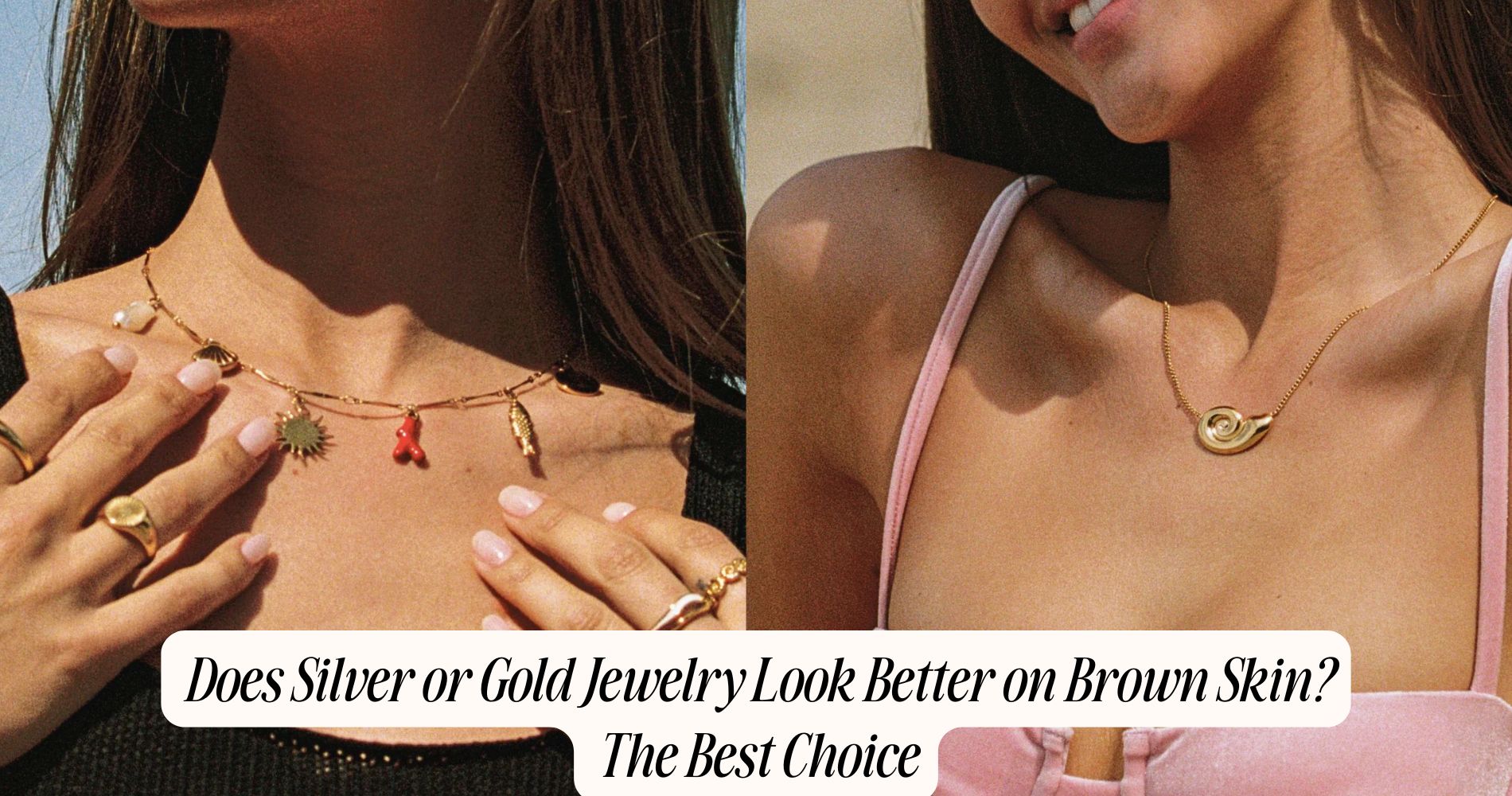




Leave a comment
This site is protected by hCaptcha and the hCaptcha Privacy Policy and Terms of Service apply.